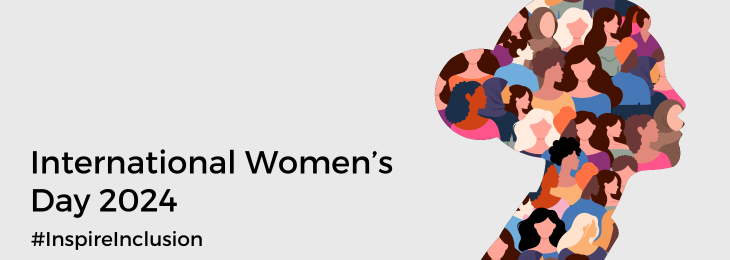
Fintech is a term that has entered the collective public consciousness in recent years. There is an increasing awareness of the disruption and exciting opportunities Fintech is bringing to financial services and consumers alike. This article looks at the benefits of Fintech, some of the challenges, and examines how the world of financial crime and Fintech complement each other. But, first, what exactly is Fintech?
Investopedia describes it as follows:
“Fintech is a portmanteau of financial technology that describes an emerging financial services sector in the 21st century. Originally, the term applied to technology applied to the back-end of established consumer and trade financial institutions. Since the end of the first decade of the 21st century, the term has expanded to include any technological innovation in the financial sector, including innovations in financial literacy and education, retail banking, investment and even cryptocurrencies like bitcoin.”1
Not only is Fintech bringing transparency and openness to the industry (take the foreign remittance services, which brings price transparency to users, or crowdfunding, which opens up access to funds for firms that might otherwise be excluded from traditional bank funding), but it is also helping to tackle financial exclusion.2
However, there are risks associated with the rise of Fintech, as noted by the Financial Action Task Force (FATF): “The greatest risks of Fintech are often the lack of oversight or governance and the anonymity they can provide.”3 FATF provides sample case studies in its transcript of FATF’s Executive Secretary at the XXV International Financial Congress in St. Petersburg on July 1, 2016. All three cases focus on the use of Fintech in support of terrorist financing activity, whether via e-wallets, social networks or the use of Bitcoin. This risk is heightened in the context of the more globalized nature of illicit financial crime networks and money transfers, which—without the right controls in place—Fintech could unwittingly facilitate.
With that in mind, how are financial crime risk management, compliance and Fintech converging (or indeed diverging)? Let us look at the associated challenges and opportunities through the eyes of a compliance officer at an established bank, aiming to onboard a new Fintech business customer:
After having completed the relevant identification and verification processes of the Fintech firm’s ownership, the officer would likely begin by reviewing the perceived risk elements of the relationship, and determine whether the risk profile sits within their organization’s risk appetite. This review could commence with developing an understanding of Fintech’s own approach to financial crime risk management and the culture surrounding this. Here are a range of concerns, rightly or wrongly, attributed to Fintech:
- How do the disruptive tendencies inherent in Fintech firms align with their ability to comply with relevant regulation, particularly in anti-money laundering, counter-terrorist financing and sanctions? For example, how do they apply financial crime risk analysis within rapid product development cycles that form part of their market differentiator and how do they channel their enthusiasm to challenge the status quo when it comes to the application of the letter, and more importantly, spirit of the regulations around KYC? Given that many disrupters (not necessarily in finance) have purposefully challenged existing regulation, how will these cultures work together to create an appropriately robust financial crime risk management approach?
- In a similar vein, is there a risk that the customer journey is more important than building a compliant process?
- Given how new some of these firms are, do their staff have the right expertise in place to manage the complexity of financial crime and compliance?
- What do their policies, processes and procedures look like? Have they thought about risk appetite and how will they identify and mitigate risks? Do they provide staff training?
- Will their relationship with the regulator be positive, negative or indeed nonexistent? And how tested is the compliance technology that they are deploying?
- Finally, what does their customer base look like and where is most of their transactional (if relevant) activity conducted? Have they considered their overall risk profile and how that will be managed, particularly if it is international, as many offerings are?
These are the right questions that should be asked that could raise legitimate concerns if any of the areas are particularly deficient. However, it is worth considering that within these risk areas, there are also some opportunities:
- The disruptive tendencies previously mentioned could lead to significant improvements in the financial crime risk management space, helping to establish frictionless and efficient onboarding, risk identification and investigation procedures, all supported by technology that might well be more advanced, or at least tailored to the business model, than the prevention and detection systems in place at more traditional organizations.
- Building a new business model from scratch will inherently bring a much more manageable set of data which is of far better quality and structure.
- Due to the nascent build out of Fintech firm’s organizational structure and its product offering, there is a potential for financial crime risk management and compliance teams to play an important role in shaping both the surrounding governance and the product itself, ensuring that a smooth customer experience is balanced with appropriate and innovative risk controls.
- Although staff at a Fintech firm may be inexperienced, they are often very bright, with strong intellectual and/or design credentials. In many instances, they also have equity stakes in the business they work for, meaning there is a high motivation to ensure that the venture is a success. This can have positive impacts on the management of financial crime in the firm.
- Similarly, there is a real opportunity for compliance and financial crime teams to influence the build out of risk policies, processes and procedures, ensuring they are actionable, intelligent and proportionate to the risks the Fintech firm faces, while also building global standards from the get-go.
- Furthermore, there is an opportunity for a Fintech firm to develop a positive relationship with the regulator from the outset, provided they are thinking carefully about financial crime risk management and compliance. A cooperative relationship here could give rise to exiting regulatory developments and bring benefits to new and legacy financial services.
Given the evolution of crime and its evermore global nature and desire to find new forms of value transfer, it is in everyone’s interest to help prevent the ongoing development of crime, whether that is in a more established organization, or in a new one. As such, it is imperative that both elements work together through doing business with each other, collaborating on projects, offering funding or banking services, or through information sharing forums. There are of course some risks in doing business with the Fintech community, particularly as they are pushing the envelope on many fronts and are proud of their inherently disruptive nature; however, there are also risks in dealing with more established firms that might be slower to respond to change and less nimble in handling new financial crime typologies. In the end, there is a fantastic opportunity to learn from each other, while bringing customers better service, transparent and affordable pricing, while tackling financial crime and advancing inclusion.
- “Fintech,” Investopedia, accessed January 15, 2017, http://www.investopedia.com/terms/f/fintech.asp
- Hannah Gould, “What You Should Know About Fintech and its Positive Powers,” Guardian, February 3, 2015,
https://www.theguardian.com/sustainable-business/2015/feb/03/what-you-should-know-about-fintech-positive-powers-banking - David Lewis, “Accessibility of Financial Services: Challenges and Opportunities for Development,” FATF, July 1, 2016,
http://www.fatf-gafi.org/publications/fatfgeneral/documents/speech-international-financial-congress-july-2016.html










